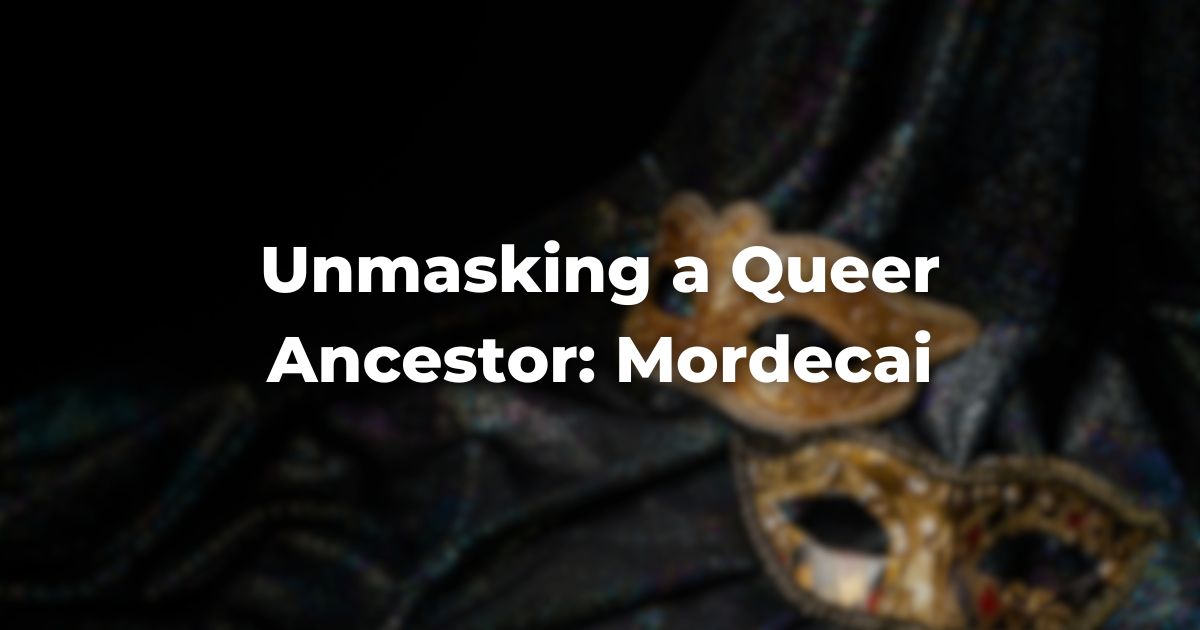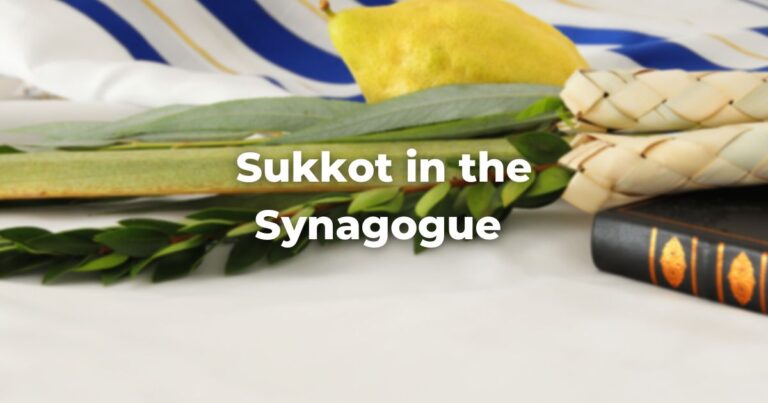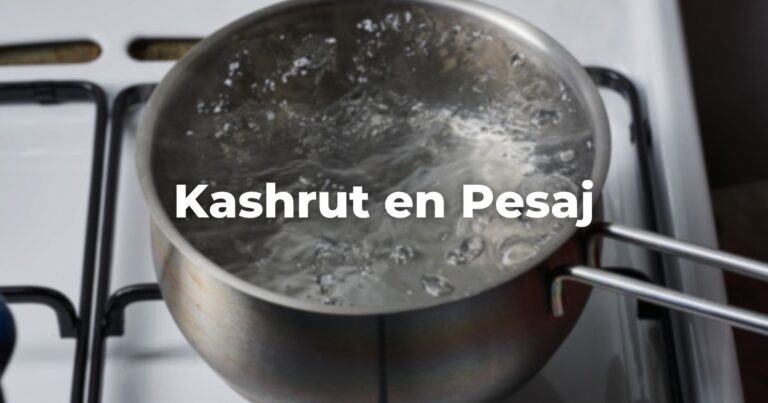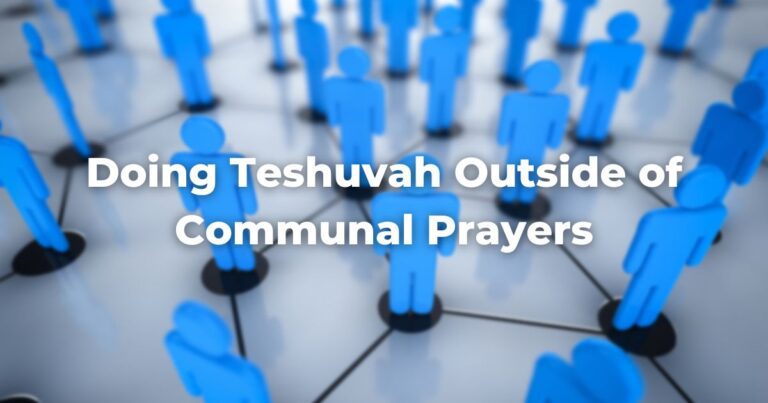There are no gay characters in the TorahRefers to the first five books of the Hebrew Bible, the Tanakh, also called the Five Books of Moses, Pentateuch or the Hebrew equivalent, Humash. This is also called the Written Torah. The term may also refer to teachings that expound on Jewish tradition. Read more. There aren’t any straight ones, either.
This can be hard to hear, especially if you, like me, identify as some form of LGBTQ. But I’m not here to engage in a game of historical anthropology, I’m not trying to prove some ancient fact. It doesn’t matter if Mordecai is literally transgender or King David was literally bisexual. They wouldn’t have recognized those terms or identities, just like they wouldn’t have recognized terms like ‘heterosexual’ or ‘cisgender’ as fixed categories which matter much at all.
To paraphrase Joy Ladin, a transgender poet and Professor of English at Yeshiva University, I am looking for “trans experiences” or “bi experiences,” things which look familiar. I want to find places in our texts and traditions which feel like home, experiences with which we can identify and relate. If you’re reading this, I imagine you might feel similarly.
We are seeking meaning and spiritual ancestors.
We’re trying to find ourselves in the family portrait.
As we draw closer to Purim, one of the queerest days on the Jewish calendar, my attention is drawn to that story of danger and redemption, The Book of Esther. And, as we read it this year, I’d like to draw your attention to this one thought:
Something looks familiar about Mordecai.
“He was omein to Esther”
When he is introduced in chapter two of the book of Esther, Mordecai is described as:
וַיְהִי אֹמֵן אֶת־הֲדַסָּה הִיא אֶסְתֵּר בַּת־דֹּדוֹ כִּי אֵין לָהּ אָב וָאֵם:
“And he was omein to Hadassah—that is, Esther—his Uncle’s daughter, for she had neither father nor mother.” (Esther 2:7)
What is an omein?
It’s a hard word to translate, but here it seems to mean “a caretaker.” What kind? Here’s another example of the word in the Torah:
הֶאָנֹכִי הָרִיתִי אֵת כָּל־הָעָם הַזֶּה אִם־אָנֹכִי יְלִדְתִּיהוּ כִּי־תֹאמַר אֵלַי שָׂאֵהוּ בְחֵיקֶךָ כַּאֲשֶׁר יִשָּׂא הָאֹמֵן אֶת־הַיֹּנֵק עַל הָאֲדָמָה אֲשֶׁר נִשְׁבַּעְתָּ לַאֲבֹתָיו׃
“[Moses says to G-d in a moment of exasperation] Did I conceive all this people, did I birth them, that You should say to me, ‘Carry them in your bosom as an omein carries a baby,’ to the land that You have promised on oath to their fathers?” (Numbers 11:12)
This verse makes the caretaking nature of our word more clear. An omein is a person who carries an infant on their breast, who is pregnant with them and births them. Moses says to G-d “am I this people’s mommy?!” In this case, as well as the case with Mordecai, this term is used to describe what appears to be a man, but in a gender-bending kind of way.
It should come as no surprise then that the Rabbis imagined Mordecai having this exact relationship with Esther, as is written in a stunning text brought to my attention by my friend and colleague Rabbi Sass Brown (it can also be found, along with many other queer texts, in the anthology A Rainbow Thread):
מָרְדְּכַי זָן וּפִרְנֵס, אָמַר רַבִּי יוּדָן פַּעַם אַחַת חִזֵּר עַל כָּל הַמֵּנִיקוֹת וְלֹא מָצָא לְאֶסְתֵּר לְאַלְתָּר מֵינִיקָה, וְהָיָה מֵינִיקָהּ הוּא, רַבִּי בֶּרֶכְיָה וְרַבִּי אַבָּהוּ בְּשֵׁם רַבִּי אֱלִיעֶזֶר בָּא לוֹ חָלָב וְהָיָה מֵינִיקָהּ. כַּד דָּרַשׁ רַבִּי אַבָּהוּ בְּצִבּוּרָא גָּחוֹךְ צִבּוּרָא לְקָלֵיהּ, אֲמַר לְהוֹן וְלָא מַתְנִיתָּא הִיא, רַבִּי שִׁמְעוֹן בֶּן אֶלְעָזָר אוֹמֵר חָלָב הַזָּכָר טָהוֹר.
Mordecai fed and sustained! Rabbi Yudan said: Once, he went out to search among all of the wetnurses, but he did not find one appropriate for nursing Esther, so Mordecai breastfed her. Rabbi Berkhiyah and Rabbi Abahu said in the name of Rabbi Eliezer: Milk came to him so he breastfed her. Once, Rabbi Abahu gave a sermon on this to his synagogue, and the congregation laughed to hear about it. He responded to them: “Is this not Torah [lit. Mishna]? Rabbi Shimon ben Elazar taught, ‘the milk of a male is ritually pure.’” (Genesis Rabbah 30:8)
Pausing here for a moment, what have we learned and what looks familiar to us?
First: At a minimum, Mordecai is there to be mother and father to Esther, to raise her as a single parent. This unusual family structure might be familiar both to those of us who grew up in a non-normative home and those of us seeking to build homes which don’t match the assumed nuclear family of one mom, one dad, 2.5 kids, and a white picket fence. Whatever we think of the word omein, the verse itself tells us Mordecai is omein to Esther because “she had neither father nor mother.”
Second: The text refers to Mordecai as male but also uses feminine language, specifically connected to a breastfeeding parent. Mordecai, while continuing to be referred to with masculine pronouns, is presented as capable of breastfeeding. The Rabbinic imagination sees this unusually-bodied character and simply goes with it: If the Torah says that Mordecai was omein to Esther, clearly that is what it means.
Third: The congregation has a mixed reaction to this way of viewing Mordecai. While the dominant voice in the Genesis Rabbah text presents the story of Mordecai breastfeeding unselfconsciously, this reading is met with laughter. This feels familiar. Atypical gender presentation is often met with discomfort and derision, queer readings are often accused of being outside the norms of Torah reading. Rabbi Abahu stands up for his reading of the text, linking it to the tradition, insisting upon its place in our Jewish canon.
We’ve barely begun to look at Mordecai, and already we have so much to identify with. Mordecai’s family is unusual, his body is unexpected, and he is faced with a world which neither understands nor takes him seriously. Nevertheless, both the text of the Book of Esther and the discussions of the Rabbis reveal that he is well within bounds. His body and family do not pose a threat. On the contrary, he is the hero of our story.
As we will see presently, The Book of Esther appears to tell us that Mordecai is able to be the hero because of his unusual relationship to gender, not in spite of it.
At the Gates of the Women’s House
The King of Shushan’s former wife disobeyed his demand to attend his drunken party naked. His advisors, worried that other wives will hear the news and “despise their husbands” (Esther 1:17), tell him to send her away (likely imprisoned or killed.) As a result, the king wants a new wife. He gathers all of the young eligible women in Shushan into one place, called beit hanashim ‘the Women’s House’ under Hegai, the shomer nashim, ‘the Women’s Guard.’
These women are kept under lock and key. For what purpose? What are they being protected from? And what makes Hegei and the other guards capable of being trusted?
They are all sarisim, eunuchs. When the king summons his soon-to-be ex-wife, she is accompanied by eunuchs (Esther 1:10), when the plot to find a new wife is described, eunuchs (including Hegai) are to be the guards (2:3), when Esther becomes queen, her servants will be eunuchs (4:5), and even those guarding the palace gate are eunuchs (2:21). The King of Shushan appears to believe that men who have their genitals intact are dangerous and need to be kept as far from the women as possible, lest they be overwhelmed in their sexuality and attack them.
And yet, where is Mordecai?
וּבְכָל־יוֹם וָיוֹם מָרְדֳּכַי מִתְהַלֵּךְ לִפְנֵי חֲצַר בֵּית־הַנָּשִׁים לָדַעַת אֶת־שְׁלוֹם אֶסְתֵּר וּמַה־יֵּעָשֶׂה בָּהּ׃
Every single day Mordecai would walk about in front of the court of the beit hanashim, to learn how Esther was faring and what was happening to her. (Esther 2:11)
And once Esther is made queen of Shushan, where does Mordecai go?
בַּיָּמִים הָהֵם וּמָרְדֳּכַי יוֹשֵׁב בְּשַׁעַר־הַמֶּלֶךְ קָצַף בִּגְתָן וָתֶרֶשׁ שְׁנֵי־סָרִיסֵי הַמֶּלֶךְ מִשֹּׁמְרֵי הַסַּף וַיְבַקְשׁוּ לִשְׁלֹחַ יָד בַּמֶּלֶךְ אֲחַשְׁוֵרֹשׁ׃ וַיִּוָּדַע הַדָּבָר לְמָרְדֳּכַי וַיַּגֵּד לְאֶסְתֵּר הַמַּלְכָּה וַתֹּאמֶר אֶסְתֵּר לַמֶּלֶךְ בְּשֵׁם מָרְדֳּכָי׃
At that time, when Mordecai was sitting in the palace gate, Bigthan and Teresh, two of the king’s eunuchs who guarded the threshold, became angry, and plotted to do away with King Ahasuerus. Mordecai learned of it and told it to Queen Esther, and Esther reported it to the king in Mordecai’s name. (Esther 2:21-22)
In each case, Mordecai is allowed to get very close to those places the eunuchs are guarding. He is allowed to get close enough to the beit hanashim that he can learn what is going on. He is able to get close enough to the palace gate that he can overhear the, presumably whispered, secret plot against the king. He is then able to communicate this secret information to Queen Esther, all without arousing the suspicions of the King, despite the latter not learning about Mordecai’s relationship to Esther until much later (8:1) and becoming violently jealous when other men come near his wife (7:8).
In a space which is thick with the policing of body types and gendered assumptions about what people with certain bodies want, Mordecai is left alone. Eunuchs and Mordecai, it seems, are of similar status when it comes to assessing threats to women.
Does this mean that Mordecai is transgender?
No. As I wrote at the beginning, such a label is not helpful.
However, is Mordecai’s relationship to gender familiar to those whose bodies don’t conform to many people’s expectations? Is his family structure atypical? Does he bend gender norms? Is he unique in his relationship to the body-sensitive king’s palace?
Yes, to all of the above.
Mordecai does not conform to any of our, or the text’s, expectations about what a man looks like or does.
It is this subversion that allows Mordecai, along with Esther, to save the Jewish people.
The kingdom of Shushan represents a rigidly gendered society, in which people with certain bodies are expected to behave in specific ways. The King of Shushan expects his wife to obey him and threatens women with death who do not. He assumes that all men with intact genitals are dangerous, unable to contain their sexuality.
The Queer Jew steps in to model a different world in which gender and body are not determinative of our entire lives, in which flexibility and diverse expressions of our common humanity are not only tolerated, but critical to human flourishing.
On Purim, the world is flipped upside-down. We are asked to imagine the role randomness and chance have played in our lives, how little of what we consider permanent and inevitable about ourselves was and is set in stone. A day when everything that appears solid is revealed as an affect, a performance, a collective cultural choice. The chosen costumes reveal the unchosen costumes worn underneath. This is the outlook Purim and queerness come to share, inviting all of us, queer or not, to work towards and reap the rewards of a free world.
Happy Purim, everyone!
Author
-
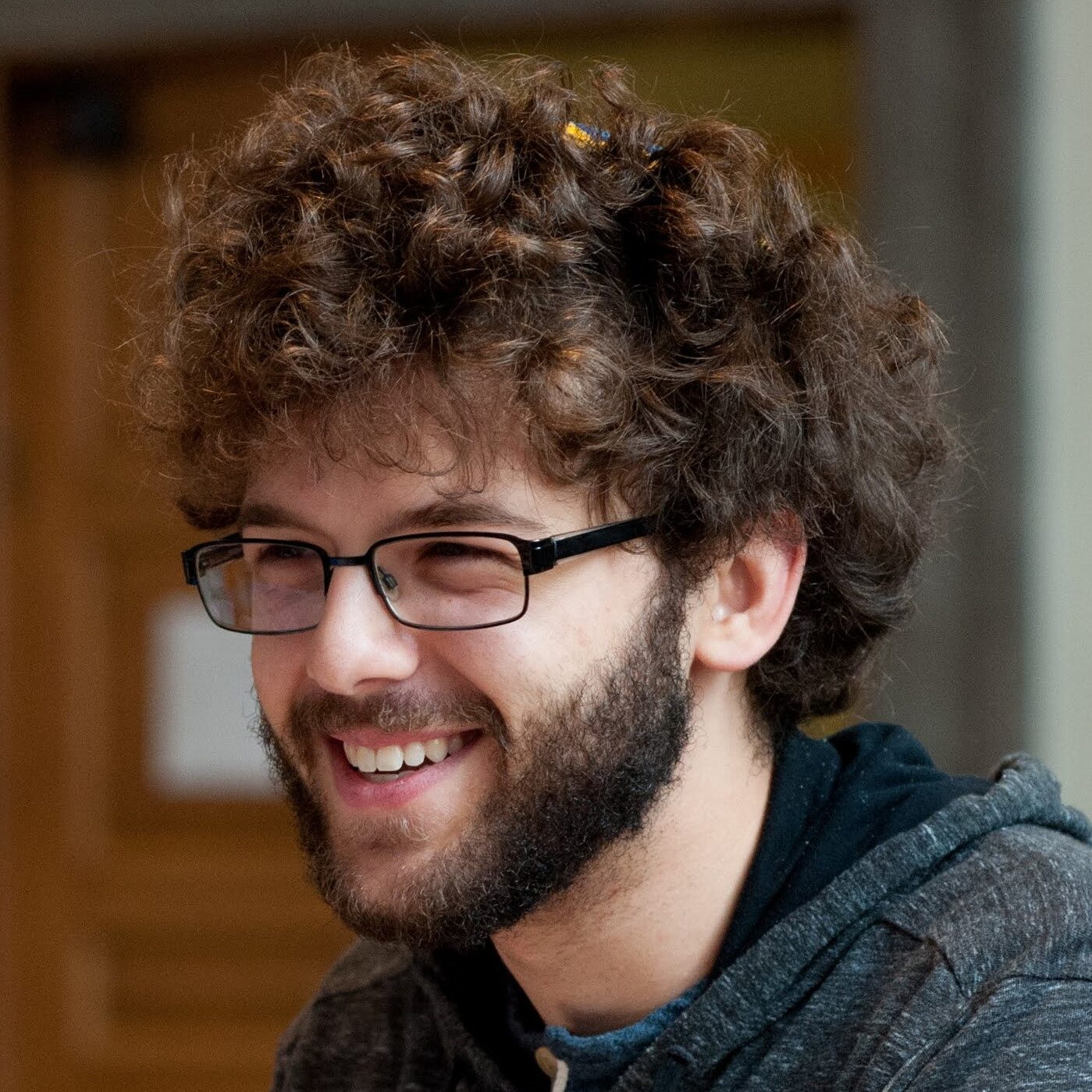
Alex Friedman (he/him) is a Rabbinical student at the Jewish Theological Seminary in his final year of study. He was a fellow in the first cohort of the Exploring Judaism's Writer's Fellowship. A native Texan, Alex grew up in the Conservative movement and has worked with and for Conservative communities across the US and in Israel. He holds a BA in Near Eastern and Judaic Studies (NEJS) and Politics from Brandeis University. Alex enjoys cooking, podcasts, Jewish music and niggunim, queer Torah, and collecting owl tchotchkes.
View all posts

